Collar and Harness Types
Dec 6, 2018 Tracey Aston Training

So your pet needs a new collar or harness and you set out to purchase one only to be overwhelmed by the numerous and varied types. What do they all do? How are they different? It's enough to make your head spin! Before we begin, Comfort at Home Pet Services does NOT use, or condone the use of, choke chains, electric shock collars or pinch collars! This equipment is made to cause pain, and studies have shown it can cause aggression issues, severe medical risks and ruin the bond between you and your pet. Therefore, these types of collars will not be discussed in this article.
The most common type of collar is a rolled or flat collar, usually made of nylon or leather with a plastic clip or belt buckle fastener. The pros of this type of collar are they are widely available, inexpensive and are available in different colors or designs. The cons are risks to trachea and thyroid damage if the pet pulls or leans into the collar, skin irritation issues if collar is left on at all times, and possible strangulation risk if caught on something.
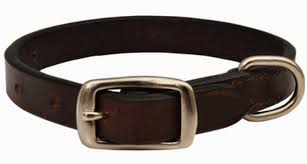
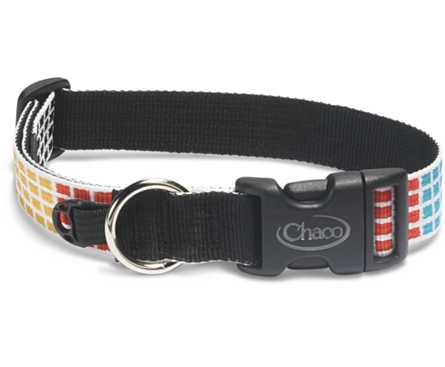
Martingale, or limited slip collars, fit loosely on a dog's neck but tightens when needed but without choking. Martingales look similar to a flat nylon collar but it has two loops in the back that are adjustable and can be adjusted so it slips over your dog's head but is worn snuggly. When the dog pulls, the collar will tighten to prevent the dog from pulling their head out but doesn't choke the pet. When the pet stops pulling, the collar loosens again. The pros of this type of collar are they make good training collars by teaching your pet leash manners and making it difficult for your pet to pull their head out of the collar when on a leash and escape away from you. The cons are similar to a rolled or flat collar with risks to the trachea and thyroid, because of the location of the collar, and risks of it getting caught on something and a frightened dog will keep pulling trying to get away and the collar will stay tight.
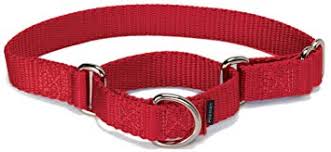

Front-attaching harnesses, such as Easy Walk Harness, Walk-in-Sync Harness and Freedom Harness are slipped over your pets head and designed to clip over your pet's chest area. The Freedom Harness is a little different as it has more control and it comes with 2 clips, one under the chin on the chest and one on their back. This type of harness requires a special 2 prong leash made to attach in two places. Harnesses are recommended for pets who need a little work on their loose-leash walking. This harness is used as a training tool by redirecting the pet back to you, which helps train and teach no pulling and loose leash walking. The pros are harnesses don't come with the neck and throat risks, or strangulation risks of more traditional collars, and they allow better control and allows you to “steer” your pet. The cons of this harness are possible discomfort in poorly fitted harnesses that can interfere with a pet's movement. There are possible issues with chronic pain, shoulder issues and interference with gait from a pet continually pulling, as such this collar should be used as a training tool to teach loose leash walking and redirection.

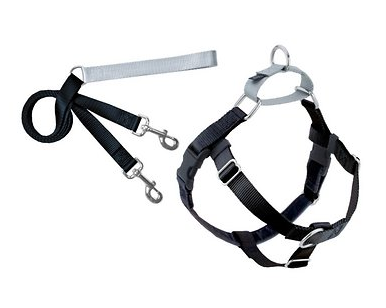
Back-clip harnesses fit over the dog's chest and clips on the back. A pro of a properly fitted back-clip harness is they are extremely difficult to escape. Back clip harnesses can be used when tying out a dog for a potty break, as the back clip assures your pet won't trip over the leash as they would with a front clip. The con to a back-clip harness is that it can encourage pulling in dogs who haven't mastered the loose-leash walk. Remember a dog can pull up to 3 times their body weight. Back clip harnesses can also be very difficult to get on, as it requires your pet to step into them.

Head halters, such as Gentle Leader and Snootloop are a piece of nylon that loops around the dog's muzzle, which prevents the dog from keeping their nose close to the ground and makes it easier for the owner to keep the dog's attention. The pros are it's easy to keep a dog's attention, and prevents pulling. This type of leash should never be used as a restrictive muzzle device, fitted so tightly as to cause breathing issues or rubbing of the muzzle. The cons are this type of collar may take time for your dog to get used to it and should only be used once your dog is trained to walk politely on a leash. This type of leash should never be used on bronchial cephalic (short snout) dogs, as it can cause breathing issues. This type of halter must be used in conjunction with a collar or harness for control and to keep your pet safe. If your dog was to jerk, or you were to jerk, this could cause serious injury to a dog's neck if a halter is used as the sole form of control.
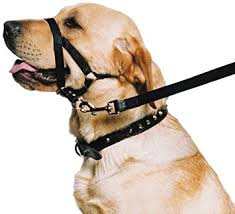
The most important issue with any collar or leash is they must be properly fitted for optimal control and safety of your pet. The rule of thumb for collars and harnesses is the “two finger” rule: Once the dog's collar or harness is fastened, you should be able to easily slide two fingers under the collar. The collar should feel snug but not too tight. Heavy coated dogs may possibly appear to have their collar on too tightly because of the amount of hair around their neck but improperly placing a collar poses a serious escape risk for your pet. Make sure you're fitting your heavy coated dog, such as Husky, German Shepherd, and St. Bernard, with 2 fingers between the skin, not the hair, of the pet and the collar or harness. After properly fitting a collar or harness, your choice will depend on your pet's training needs, comfort levels and your preference. The safety and control of your pet should always be foremost in making your choice.
Comfort at Home Pet Services prefers the use of Freedom Harness and Easy Walker harnesses.
















